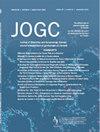Influence of Planned Versus Unplanned Cesarean Delivery on Postpartum Peritraumatic Distress: A Prospective Observational Study
IF 2.2
Q2 OBSTETRICS & GYNECOLOGY
引用次数: 0
Abstract
Objectives
Postpartum post-traumatic stress disorder (PTSD) is a significant contributor to maternal morbidity. Peritraumatic distress, an immediate reaction to a traumatic event, is an early indicator of PTSD and may help identify patients at risk for postpartum PTSD soon after delivery. Previous studies report higher rates of postpartum PTSD after unplanned cesarean delivery. We hypothesized that peritraumatic distress scores, measured using the peritraumatic distress inventory (PDI), would differ between planned and unplanned cesarean deliveries.
Methods
In this observational prospective study, patients completed the PDI and patient perception score (PPS) 24 hours after cesarean delivery. The primary outcome was the median difference in PDI scores by delivery urgency (planned vs. unplanned), assessed using the Mann–Whitney U-test. Secondary outcomes included the correlation between PDI scores and patient satisfaction, as measured by Kendall tau correlation.
Results
A total of 220 patients (110 planned, 110 unplanned) were included. Patients who underwent unplanned cesarean delivery reported significantly higher PDI scores (P < 0.001). A greater proportion of unplanned versus planned deliveries exceeded the PDI threshold for PTSD risk (25.5% vs. 5.5%). There was a significant negative correlation between PDI and patient perception scores (τ = −0.25; P < 0.001).
Conclusions
Unplanned cesarean delivery was associated with elevated peritraumatic distress and increased risk for postpartum PTSD. Early PDI screening may help identify patients in need of psychological support before discharge. However, low PDI scores should not preclude follow-up because some may develop delayed trauma responses. These findings support universal screening and underscore the need for future research on serial postpartum assessments.
计划与非计划剖宫产对产后创伤周围窘迫的影响:一项前瞻性观察研究。
目的:产后创伤后应激障碍是产妇发病的重要因素。创伤周围窘迫是对创伤事件的直接反应,是创伤后应激障碍的早期指标,可以帮助识别分娩后不久有产后创伤后应激障碍风险的患者。先前的研究报告称,意外剖宫产后出现产后创伤后应激障碍的几率更高。我们假设,使用围腹膜窘迫量表(PDI)测量的围腹膜窘迫评分在计划和非计划剖宫产之间会有所不同。方法:在这项观察性前瞻性研究中,患者在剖宫产后24小时完成PDI和患者感知评分(PPS)。主要终点是分娩紧迫性(计划分娩与非计划分娩)的PDI评分中位数差异,采用Mann-Whitney u检验评估。次要结局包括通过Kendall-Tau相关测量PDI评分与患者满意度之间的相关性。结果:共纳入220例患者(计划110例,非计划110例)。接受计划外剖宫产的患者报告PDI评分明显较高(P < 0.001)。计划外分娩与计划分娩的比例超过PDI PTSD风险阈值的比例更大(25.5%对5.5%)。PDI与PPS评分呈显著负相关(τ = -0.25, P < 0.001)。结论:意外剖宫产与围产儿窘迫升高及产后PTSD风险增加有关。早期PDI筛查可能有助于在出院前确定需要心理支持的患者。然而,低PDI评分不应排除随访,因为一些患者可能出现延迟的创伤反应。这些发现支持普遍筛查,并强调了未来对产后系列评估研究的必要性。
本文章由计算机程序翻译,如有差异,请以英文原文为准。
求助全文
约1分钟内获得全文
求助全文
来源期刊

Journal of obstetrics and gynaecology Canada
OBSTETRICS & GYNECOLOGY-
CiteScore
3.30
自引率
5.60%
发文量
302
审稿时长
32 days
期刊介绍:
Journal of Obstetrics and Gynaecology Canada (JOGC) is Canada"s peer-reviewed journal of obstetrics, gynaecology, and women"s health. Each monthly issue contains original research articles, reviews, case reports, commentaries, and editorials on all aspects of reproductive health. JOGC is the original publication source of evidence-based clinical guidelines, committee opinions, and policy statements that derive from standing or ad hoc committees of the Society of Obstetricians and Gynaecologists of Canada. JOGC is included in the National Library of Medicine"s MEDLINE database, and abstracts from JOGC are accessible on PubMed.
 求助内容:
求助内容: 应助结果提醒方式:
应助结果提醒方式:


